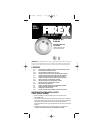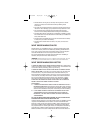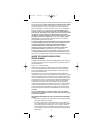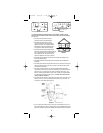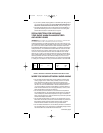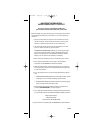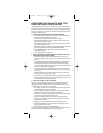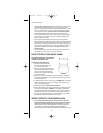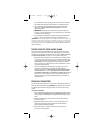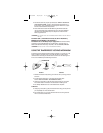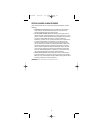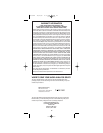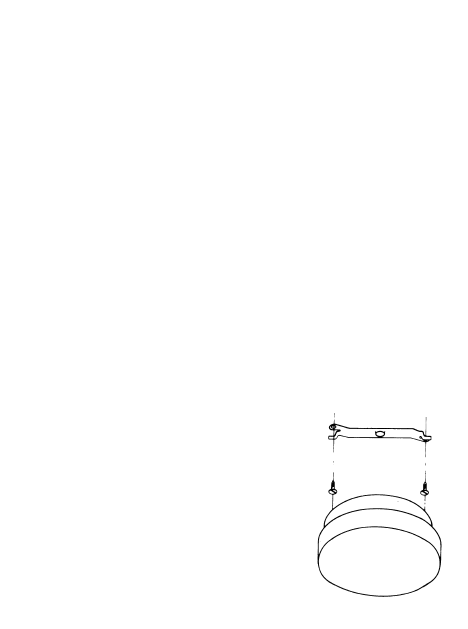
• Do not install a smoke alarm in dusty or dirty areas; SUCH AN INSTAL-
LATION CANNOT BE RELIED UPON. An accumulation of dust and dirt
in the sensing chamber may block the openings and prevent an
alarm, or may get inside the alarm and cause false alarms. If a smoke
alarm is required in such an area, vacuum it frequently and test it
according to the section “TAKING CARE OF YOUR SMOKE ALARM.”
• Do not install a smoke alarm in the dead air space in the corner
where the wall meets the ceiling. If in doubt as to the exact location
of mounting, for your safety, contact your local fire department for
help in choosing a location.
• Do not install a smoke alarm where bugs or insects are present
before eliminating or minimizing the bug problem. Although all smoke
alarms built since 1986 are made to help prevent bugs from entering
the detection chamber, bugs may build up on chamber openings and
prevent smoke from entering. As a result, unit should be vacuumed
frequently as explained in the section “TAKING CARE OF YOUR
SMOKE ALARM.”
• Do not install a smoke alarm within close proximity of a fluorescent
light. Electrical “noise” may cause nuisance alarms.
HOW TO INSTALL YOUR SMOKE ALARM
AFTER HAVING CAREFULLY READ THE FIRST FIVE
SECTIONS OF THIS MANUAL, YOU ARE READY
TO INSTALL YOUR SMOKE ALARM.
PLEASE FOLLOW THESE DIRECTIONS:
1. Unlock and remove mounting
bracket from smoke alarm with
a counterclockwise twist.
2. Place mounting bracket on ceiling or
wall in prearranged location and use
pencil to trace two opposing hole
positions for mounting screws. Drill
two 1/16-inch holes.
3. Use mounting screws provided for attaching to studs or woodwork.
For plaster or plasterboard, you may wish to use plastic anchors and
screws. See Figure 6.
4. Screw mounting bracket to surface securely. NOTE: Before mounting
alarm on a wall, be sure arrow on mounting bracket is pointing up
toward ceiling. See Figure 6.
5. Install battery. (See “REPLACING THE BATTERY.”)
6. Attach smoke alarm to mounting bracket with a clockwise twist until
it snaps into locked position. NOTE: Your smoke alarm is designed
with a safety mechanism that prevents mounting unless a battery is
installed. This helps assure the alarm is functional when mounted.
7. You have now finished installing your smoke alarm. For your safety,
proceed with testing described in the next section.
WEEKLY TESTING OF YOUR SMOKE ALARM
1. FOR A COMPLETE WEEKLY TEST OF THE ELECTRONICS AND THE
SENSOR OPERATION, FIRMLY DEPRESS THE TEST BUTTON ON THE
COVER OF THE SMOKE ALARM FOR A FEW SECONDS. The smoke
alarm will sound 3 short beeps followed by a 2-second pause and
then repeats. On models with a LED (light emitting diode) the
indicator light under the clear Push-to-Test button will blink once per
6
FIGURE 6
Continued from page 5
110-644 10/5/00 2:17 PM Page 8



